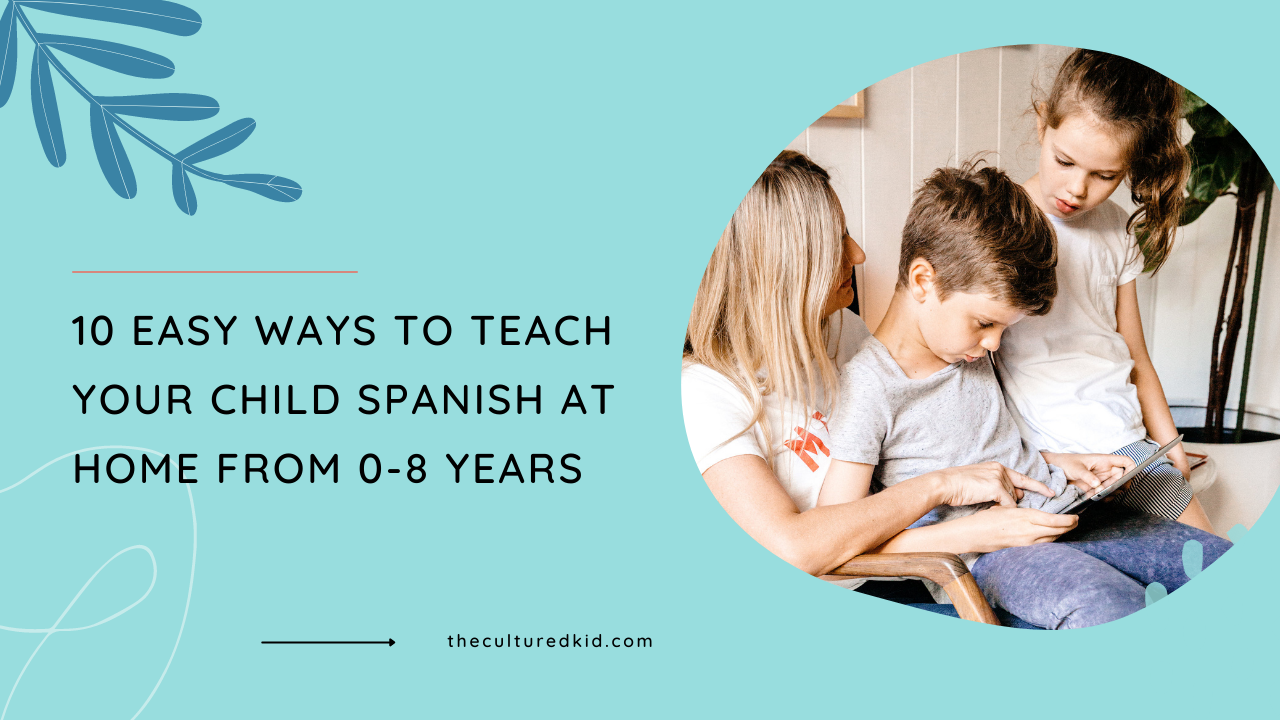10 Easy Ways to Teach Your Child Spanish at Home From 0-8 Years

Teaching your child Spanish from an early age can be a wonderful experience for both you and your child. Young children are naturally inclined to learn new languages, and providing them with a fun and engaging learning environment can help enhance their cognitive development.
Here are ten simple ways to help you teach Spanish to your child at home, from birth to eight years old.
1. Play-based Learning Activities (Babies - 4 years)
Play is the language of children, and it plays an important role in helping your child learn new Spanish words and phrases. Talk about what you and your child are doing during playtime, introducing new Spanish vocabulary along the way. You can turn play into everyday activities, making a game out of getting dressed, playing with different utensils when preparing food, or bath time.
2. Get Moving! (3 - 4 years)
This is a fun activity to encourage the development of Spanish action words and burn off extra energy! Simply call out the action CORRE! SALTAR! APLAUDIR! in Spanish and then do the action together. It’s a great game to play outside.
3. Create a Learning Space (3 - 6 years)
Creating a stimulating space at home where your child can play is important. Your space might include a mini library, a collection of age-appropriate books in Spanish and a chair or bean bag to get comfortable reading in. You can also have a play area with a small table and a shelf holding toys that are sorted into plastic tubs, labeled with images and words in English and Spanish.
4. Keep Up a Constant Narrative (Babies - 2 years)
For infants through to toddlers, talking through what you’re doing, even though they won’t talk back, is important to give them as much language exposure as possible. Use the same sentences when doing routine activities like getting dressed.
5. Choose Toys That Support Language Development (1 to 4 years)
There are many great toys out there that can help you teach your child Spanish. Building blocks are great for imaginative play and the chance to introduce new words to describe what your toddler is doing. Animal figurines are excellent for independent play and particularly for learning animal names in Spanish. Educational toys, like those from Grimm’s, are well-renowned and used extensively in kindergartens and by speech and occupational therapists.
6. Label Things Around the House (4 - 8 years)
Putting labels on things they see regularly is a great way to help them memorize new Spanish words.
7. Make Vocabulary ‘Drills’ Fun with Flashcards (3 - 8 years)
Vocabulary drills can be repetitive and dull, but using flashcards can make them more engaging for kids. You can create your own flashcards or purchase pre-made ones, such as those from The Cultured Home. Set aside a regular time each day, perhaps 10 minutes after breakfast or before bedtime, to go through the flashcards with your child. Make up sentences using the words on the cards to help reinforce their understanding of the language.
8. One Person, One Language Method (Babies - 8 years)
If you or your partner are native Spanish speakers, you can use the "one person, one language" method to teach your child both Spanish and English. This means that one parent consistently speaks Spanish to the child while the other parent consistently speaks English. This method ensures regular exposure to both languages, which is important for bilingual development.
9. Establish a Daily Set Time for Speaking Spanish (3 - 8 years)
As a parent who speaks Spanish fluently, it can be beneficial to set aside a specific time each day to converse exclusively in Spanish with your child. This can occur naturally during everyday activities, rather than structured lessons. For parents who are not native Spanish speakers, the time can be more focused on language lessons and interactive activities.
10. Use Car Time to Engage with the Spanish Language (2 - 8 years)
If you are not a Spanish speaker, it is essential for your child to be exposed to the language through other means. Utilize car rides to play videos or language lessons in Spanish, providing an entertaining and educational way to learn while running errands.
Explore Different Cultural Events (All Ages!)
Traveling abroad is an excellent way to expose your child to various cultures and languages, but it is not always feasible. However, you can still create cultural experiences by seeking out festivals, restaurants, and museum exhibits that showcase the Spanish language and culture in your city.
By utilizing these techniques, you can assist your child in developing proficiency in Spanish while fostering a passion for learning new languages. If you require additional resources and guidance, consider exploring The Cultured Home for weekly language lessons and practical tips. ¡Buena suerte!
GRAB OUR FREE 'KIDS LANGUAGES MADE EASY' GUIDE
FOR NON-NATIVE PARENTS!
Discover how you can run consistent language lessons, that are fun and engaging and help your kids make the progress they deserve!
Even if you're not fluent!
We hate SPAM. We will never sell your information, for any reason.








